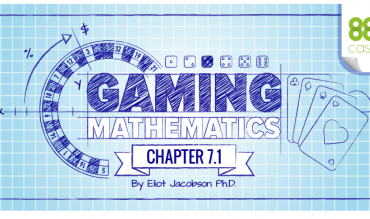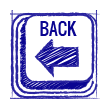HEORETICAL HOLD
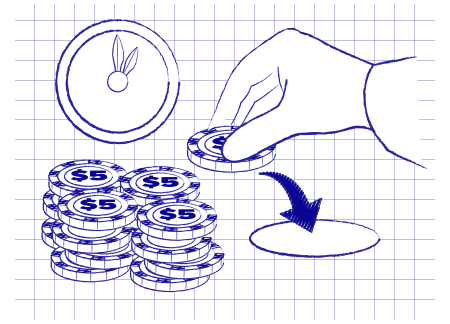 Suppose a casino game has house edge of 5%. Suppose a player walks up to the game and buys $100 in chips (a drop of $100). Assume the player wagers a consistent $5 per hand. If the game moves at a pace of 40 rounds per hour and the player plays for two hours, then he will play 80 rounds of the game on his original $100 buy-in (assuming he doesn’t bust out). Another way of viewing this is that playing 80 rounds means wagering a total of $5 x 80 = $400. It follows that the player churned his original $100 buy-in four times.
Suppose a casino game has house edge of 5%. Suppose a player walks up to the game and buys $100 in chips (a drop of $100). Assume the player wagers a consistent $5 per hand. If the game moves at a pace of 40 rounds per hour and the player plays for two hours, then he will play 80 rounds of the game on his original $100 buy-in (assuming he doesn’t bust out). Another way of viewing this is that playing 80 rounds means wagering a total of $5 x 80 = $400. It follows that the player churned his original $100 buy-in four times.
The theo for the player is:
theo = 0.05 x $400 = $20.
It follows that the player theoretically leaves the table with $80 in chips. The theoretical hold is:
Theoretical Hold = ($20 × 100) / $100 = 20%.
The reason this hold is theoretical is that it is not based on the player’s actual results. In practice, this player may have lost his entire buy-in, in which case the hold would be ($100 x 100)/$100 = 100%. Or maybe the player won $300, in which case the hold would be (-$300 x 100)/$100 = -300%.
This example underscores the need to measure hold over large amounts of times and many players. If the focus is too narrow, there is nothing to be gained by this metric. Unlike slots, “hold” is about the actual results of the game in practice. It does not measure the house edge and it does not measure the results of one player.
Now, let’s rip apart the blackjack hold data in Figure 5. As indicated by Figure 5, the statewide hold was 11.60%. Figure 6 breaks down the statewide hold by county (and major gaming area within that county, if appropriate) for the same fiscal year, July 1, 2008 to June 30, 2009.
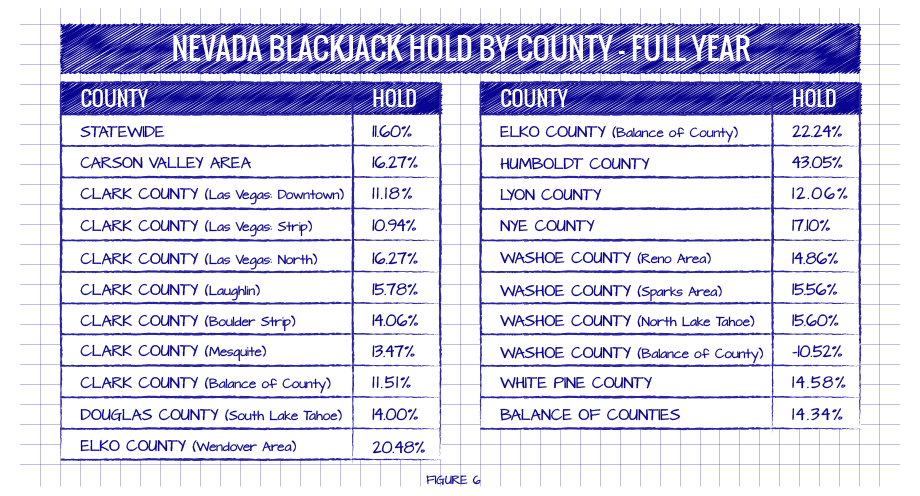
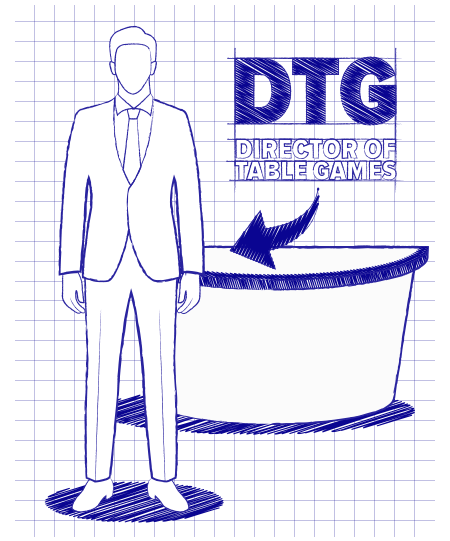
One of the tragedies of casino operations is that hold is used to measure performance. Drop is important because it measures the total activity the game is generating. The win is important because it indicates the net profitability of the game. The ratio of these two seems as though it should be an important and precise value. But the hold for table games is subject to many more forces than house edge and total amount wagered.
To see how vulnerable the hold is to extraneous forces, we consider a director of table games (DTG) at a Las Vegas strip property who is given a mandate by upper management. Suppose this casino has a 10% hold on its blackjack games and the DTG is given the order to increase the hold to 14%. As a practical matter, there are a few things the DTG can try.
1. Get the players to play longer. To do this, offer free drinks, party pits, friendlier dealers and non-smoking tables. Make the experience at the table one that is tough to walk away from.
2. Get the casino dealers to deal faster. The hold is increased by the rate at which hands are dealt, otherwise known as the “hands-per-hour” or “decisions-per-hour”.
3. Decrease the number of players at each table. If the dealer can deal 360 individual hands per hour, then at a full table of 6 people, each person is going to see 60 hands in an hour. If the number of spots at the table is reduced to 5, then each person is going to see 72 hands per hour. More hands per hour equates to a higher hold (but not necessarily a higher win; there is also the cost of additional dealers).
4. Open more tables and drive players to them using appropriate table minimums. Again, the objective is to deal more hands per player per hour. The fewer number of players at a table, the more hands each player at that table will see in an hour.
5. Get the players to play more money per hand. Given a specific playing duration, the more money that gets on the felt, the higher the overall win. This is often done by increasing the table minimum as the day goes on. This comes with the cost of driving some small bettors away.
6. Make minor modifications in the game rules to increase the house edge. With a higher house edge, the house will win more per dollar wagered at the table. Rules like having the dealer hit on soft 17 or not allowing the player to double down after a split are typical adjustments. These rule changes comes with a cost: even small rule changes may drive some players away. Having blackjack pay 6-to-5 is not “minor.”
7. Set up procedures so that chip fills, cleaning spills at the table, and resolving player disputes are handled as quickly as possible.
8. Change the shuffling procedure to speed it up. As part of this, reposition the cut card in the shoe to allow more hands to be dealt from each shoe and hence less shuffling. Have the dealer shuffle as infrequently as possible.
Clearly, some of the techniques for increasing the hold work against each other. For example, by dealing more hands per shoe the game becomes more vulnerable to card counting. Making the rules too house-favorable will drive players away, decreasing the win. Many players like to play at full tables and may walk away if the tables are sitting empty or have one or two players at them. There is a balance point that can only be determined based on understanding the local market.
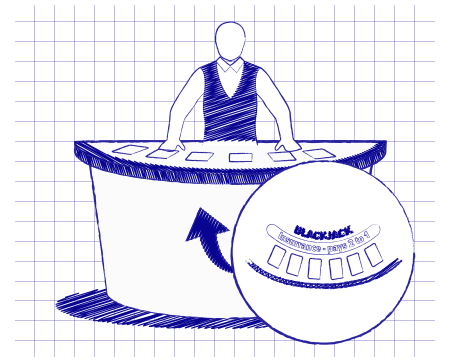
Assume that the average blackjack player at a property buys in for $200 and plays a strategy that corresponds to a 1% house edge. He likes to play at a full table dealt from a shoe with six spots.
Assume the dealer deals 60 hands per hour to this player. If the player makes $10 wagers and plays for three hours, then the player sees a total of 180 hands. The house theoretically wins $10 × 180 × 0.01 = $18. This corresponds to a pretty dismal theoretical hold of:
Hold = ($18 × 100) / $200 = 9.0%.
Now suppose the DTG decides to increase the game speed to 72 hands per hour by reducing the number of spots from six to five. This same player will then see 216 hands in his three hours of play. The house theoretically wins $10 × 216 × 0.01 = $21.60. This corresponds to a theoretical hold of:
Hold = ($21.60 × 100) / $200 = 10.8%.
Now suppose this player loves the company of the dealer and other players, gets lots of free drinks, and thus settles in for an extra hour, so that he plays four hours instead of three. This same player is now playing 72 × 4 = 288 hands. The house theoretically wins $10 × 288 × 0.01 = $28.80. This corresponds to a theoretical hold of:
Hold = ($28.80 × 100) / $200 = 14.4%
Now suppose that after two hours of play, the director raises the table minimum from $10 to $15, forcing this player to raise his bet to $15 if he wants to stay playing with his friends at this great table. The player now plays 2 hours (144 hands) at $10 and 2 hours (144 hands) at $15. The house theoretically wins $10 × 144 × 0.01 = $14.40 for the first two hours and $15 × 144 × 0.01 = $21.60 for the second two hours, for a total theoretical win of $36 from this player. This corresponds to a theoretical hold of:
Hold = ($36.00 × 100) / $200 = 18.0%.
Now suppose that the DTG decides that he can change the rules to make the game more profitable for the casino. He modifies the game so that when the player gets a blackjack it pays 6-to-5 instead of the standard 3-to-2. This adds 1.4% to the house edge. The player is now playing against a house edge of about 2.4%. Obviously, if all things were equal and this player played for the full four hours as before, this would greatly increase the hold. But this player is quickly disgusted with the game: the 2.4% edge seems unfair, so he leaves after an hour and tells the other players to leave as well. During the hour, he was wagering $10 per hand (he didn’t stay long enough to have the minimum raised to $15) and saw 72 hands. In this case the theoretical win for the house is $10 × 72 × 0.024 = $17.28 from the player. This corresponds to a theoretical hold of:
Hold = ($17.28 × 100) / $200 = 8.6%.
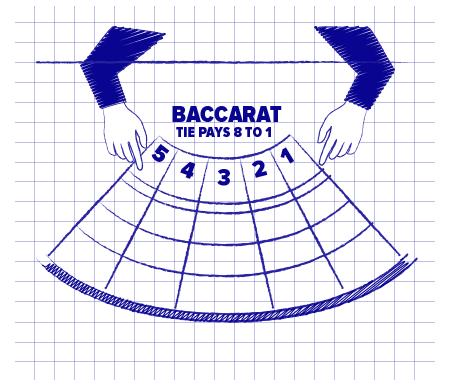 Another game that sticks out in Figure 5 for its low hold is baccarat (and mini-baccarat). Baccarat is an exception to the usual notions of the importance of hold. The game moves very slowly and players typically buy-in for large amounts of money. Players will sit out a few hands just to let the “patterns reemerge.” These things drive down hold. Most of the items on the list given to increase hold don’t apply. Baccarat players insist on a slow game. The game is already dealt down to the last few cards of the shoe. The game tends to have a serious tone, so friendly dealers don’t help keep players at the table. The rules can’t be modified. The players are highly superstitious so nothing can be changed. Of course great casino ambiance and service always help the hold, but aside from that, there is little that can be done: the game of baccarat will forever have a very low hold. The only trick for increasing hold is to include a side bet with a high house edge and hope the players will bet some of their money on it. The Dragon side bet (house edge 9.37%) is one of the most popular. On the plus side for the casino, baccarat tends to bring in upscale players who are dedicated to the game and are often repeat and loyal customers for years. On the down side, the Dragon side bet might slow down the main game with the resolution of small wagers. There’s always a balance.
Another game that sticks out in Figure 5 for its low hold is baccarat (and mini-baccarat). Baccarat is an exception to the usual notions of the importance of hold. The game moves very slowly and players typically buy-in for large amounts of money. Players will sit out a few hands just to let the “patterns reemerge.” These things drive down hold. Most of the items on the list given to increase hold don’t apply. Baccarat players insist on a slow game. The game is already dealt down to the last few cards of the shoe. The game tends to have a serious tone, so friendly dealers don’t help keep players at the table. The rules can’t be modified. The players are highly superstitious so nothing can be changed. Of course great casino ambiance and service always help the hold, but aside from that, there is little that can be done: the game of baccarat will forever have a very low hold. The only trick for increasing hold is to include a side bet with a high house edge and hope the players will bet some of their money on it. The Dragon side bet (house edge 9.37%) is one of the most popular. On the plus side for the casino, baccarat tends to bring in upscale players who are dedicated to the game and are often repeat and loyal customers for years. On the down side, the Dragon side bet might slow down the main game with the resolution of small wagers. There’s always a balance.
A caveat: the hold is not about what one player does or one player’s results. The hold is averaged over the results of all players at all tables playing the game over a period of a shift, a day, a week, a month, a quarter, or a year. This statistic is often broken down by table, by pit, by the casino, by geographic area, by county and statewide. The hold is at once about all players everywhere and about one player’s experience. It is a highly misused and misunderstood number that is affected by so many variables that it ends up meaning pretty much nothing.
Nevertheless, the hold is the holy grail of numbers for a table game.
THE DANGER OF CONFUSING HOLD (SLOTS) WITH HOLD (TABLE GAMES)
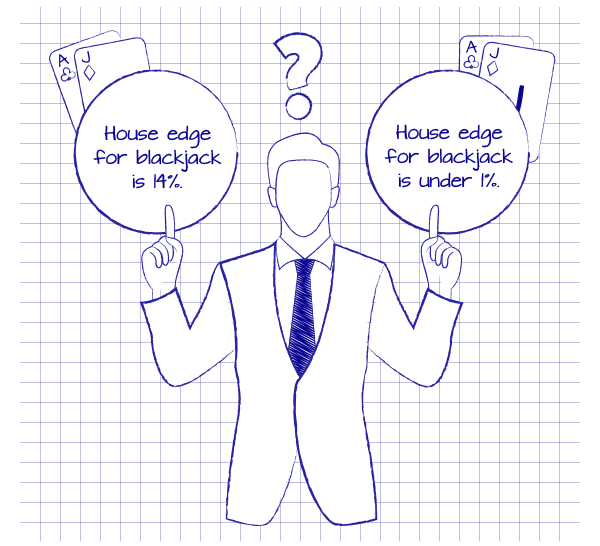
To see what can go wrong, let’s look at an example from blackjack. Assume marketing has not learned that the word “hold” has two meanings. Because they deal with slots all the time, the only meaning of the word “hold” they know corresponds to: Hold = “house edge” Marketing learns in the meeting that blackjack is holding 14%. They mistakenly believe that:
House edge for blackjack = 14%
Because marketing doesn’t know the actual numbers, they are not aware that the house edge for blackjack is actually under 1%. This lack of basic education allows them to proceed with their analytics under the remarkably incorrect assumption that the house edge for blackjack is 14%.
At the meeting, marketing is given a directive to run a promotion for blackjack to try and draw in new players. After long deliberation, they arrive at a 2-to-1 blackjack special. The gist of the promotion is that a player who receives a blackjack will be paid at the rate of 2-to-1 instead of the normal 3-to-2.
After consulting with a mathematician, marketing is informed that by changing the payout on blackjack to 2-to-1, the house edge will be reduced by 2.38%. Because marketing believes that hold = “house edge” and that the hold is 14%, they think that the new house edge under this promotion will be 14% - 2.38% = 11.62%. In other words, marketing feels like they can offer this promotion with plenty of room to spare. A hold of 11.62%, they reason, is still a pretty tight game. The truth is that the house edge for blackjack is about 0.5%. By giving back 2.38%, the house has created a rule that has turned blackjack into the player’s favor by about 1.88% playing basic strategy. Soon after marketing begins advertising the promotion, players from around the country have arrived with fistfuls of cash, armed to place table-maximum wagers.
This may seem like a far-fetched example. But the truth is that this exact scenario has played out over and over, in casinos across the states and around the world. It is therefore worth remembering, every single day, that:
Hold (slots) ≠ Hold (table games)
(© 2003 Ken Smith, reprinted with permission):
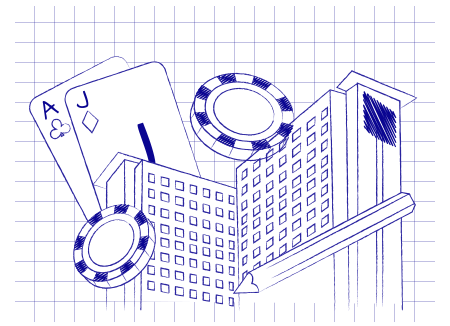
The following article, written by Ken Smith (www.bjinfo.com) first appeared in the “Blackjack Insider Newsletter,” July 2003, #42. Soon after publication, it was removed from the website that hosted it and was no longer easily available for public viewing. I can’t say for certain, but I will speculate that the author and/or publisher received feedback from advantage players that they shouldn’t freely educate casinos. This article was later included in the e-book "How to Win More Blackjack Tournaments" by Kenneth R. Smith.
Ken has been more than generous in permitting me to use this account in my public lectures. It is therefore a great honor to be able to present this article in full
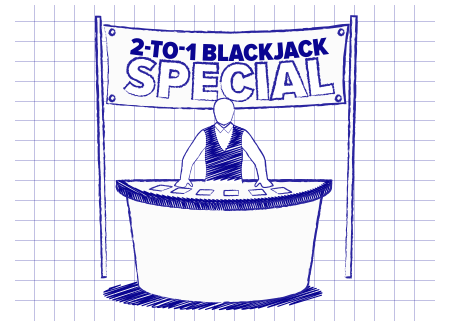
The Imperial Palace in Biloxi was a busy place on Father’s Day June 15th. The casino had widely publicized a promotion available for that Sunday. Blackjacks would be paid at 2-to-1 instead of the normal 3-to-2 odds for 24 hours starting at 12:01 AM Sunday. The promotion applied to all 6-deck tables of blackjack in the casino, and the promotion was good up to the normal table limits.
Paying an extra half-bet for blackjack may sound like nothing special, but it makes a big difference in the game. Blackjack is nearly a breakeven proposition at the outset, so anything that increases the payback can create a lucrative player opportunity. Players get a blackjack once every 21 hands or so on average. By receiving an extra half-bet every 21 hands, the player gets the benefit of an extra 2.3% return. The normal Imperial Palace six-deck game allows resplitting of Aces, and a basic strategy player will average a loss of about 0.4% of his bets. But subtract our 2.3% extra return from that 0.4% house edge, and we end up with a very attractive 1.9% player advantage for a basic strategy player.
That’s a pretty tempting deal. Play basic strategy, and you can expect to win 1.9% of your total action. Figuring a leisurely pace of 60 hands per hour, each player stands to make more than one bet an hour in expected profit. I put my family on notice that I would be absent on Father’s Day. I planned to spend as much time as I could stand at the tables at the Imperial Palace, and I hoped to win a nice Father’s Day profit for my efforts.
I didn’t realize then just how widely word of this promotion had spread. I brought plenty of cash to Biloxi, and figured I should show up early in case it was tough to get a seat. Well, I was right about that! I wandered into the casino at 8:30 PM Saturday night, 3 ½ hours before the promotion was to start. It took only a minute to see that I had a problem. There were 14 sixdeck blackjack tables on the casino floor, and there wasn’t a single seat available at any of them! I hoped that perhaps it was just a busy Saturday night, but it didn’t take long to see that wasn’t the case. There were plenty of seats available at the handful of two-deck games. Those games weren’t eligible for the promotion, so when every six-deck table had seven players crowded around it, I knew I was too late. I kept hoping for someone to leave, and I hung around the casino circling like a vulture.
While waiting, I talked to a lot of bystanders, who were in the same boat as me. I talked to people who had driven down from Memphis, from Jackson, and others who had flown in from other parts of the country. There were ninety-eight seats available for the promotion, and I would guess there were at least that many extra players hoping for a seat. As midnight approached, the situation didn’t improve. I tried buying a seat, offering $300. I found no takers. I learned that the last seats had filled up around 5:30 PM, more than 6 hours before the scheduled start. And these players weren’t budging.
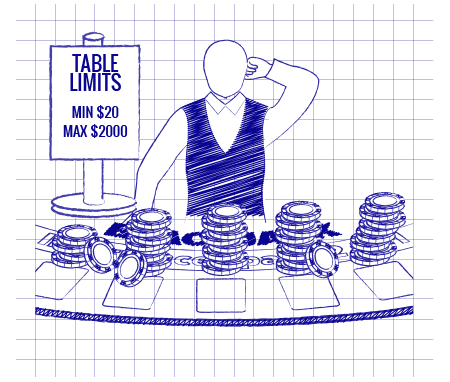 I decided I’d hang around for the show at midnight, when I expected to see a sea of cash appear on the tables. It was quite a spectacle. Starting about 10 minutes before midnight, the buy-ins began, with thousands of dollars spread and black $100 chips and purple $500 chips stacked and counted. As one of the dealers came by me headed out of the pit for her break, she just shook her head, saying “Well, the craziness has started.” She was right.
I decided I’d hang around for the show at midnight, when I expected to see a sea of cash appear on the tables. It was quite a spectacle. Starting about 10 minutes before midnight, the buy-ins began, with thousands of dollars spread and black $100 chips and purple $500 chips stacked and counted. As one of the dealers came by me headed out of the pit for her break, she just shook her head, saying “Well, the craziness has started.” She was right.
At midnight, the average bet size on the tables made a dramatic jump. Almost all of the players had been betting the table minimum while they waited. Now, with the 2-to-1 payoffs in effect, the situation changed immediately. Most of the table maximums were $2000, and of the 98 spots in play, I estimate that 50 of them were filled with table-max $2000 bets. At table after table, there were stacks of 4 purple chips filling the betting circles. I stopped to watch a table near the end of one pit. Of the seven spots at the table, the first six players bet $2000 on the first hand after midnight. The last player made a $200 bet instead. After the cards were dealt, one player had split and another doubled. When the dealer busted, there were nowhere near enough chips in the tray to pay the more than $16,000 won on hand #1 of the promotion.
This same scene played out at many of the tables, and play ground to a halt while the tables waited for fills. Players at a few tables wised up and stopped betting multiple purple chips if it was obvious that the dealer couldn’t pay them if they won. They began betting black $100 chips instead, until the tray was emptied of black. Then they switched to $25 bets and waited for more chips to arrive. By 12:45, there were only 3 tables that still had purple chips in the tray. Those were the tables where the dealer had been hot, and the players were losing. Finally, just before 1 AM, the security crews had managed to refill most of the chip trays. The $2000 bets again took the place of the $25 bets. At the table where hand one wasn’t payable, they finally got more chips, but the first fill was only about $30,000. Three hands later they had emptied the tray again. This time, the fill came much quicker and the action resumed.
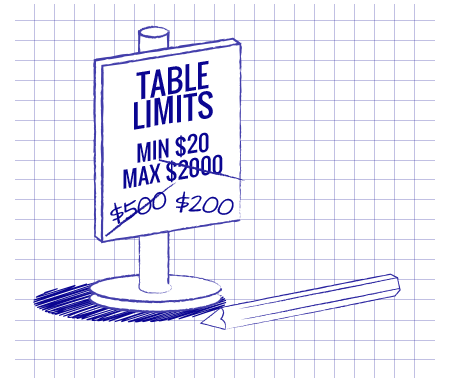
It was amazing to just walk around the floor and look at the amount of money flowing across the tables. There were several players who quickly amassed stacks of chips worth $50 or $60 thousand. This couldn’t last. At 3 AM, the pit personnel hurriedly hand-wrote new betting limit signs at each table. The new table maximum in the casino was $500. Around 75 of the spots in play were now flat bets at the new max of $500. I went to get a few hours of sleep, since it was quite apparent that I wouldn’t be getting a seat anytime soon.
I came back down to the casino around 7 AM, hoping that a few of the players would be too tired to continue. No such luck. Most of them didn’t even look tired after playing all night! I stood around chatting with other wanna-be players. At 8 AM, the table limits were dropped again, this time to $200. Still nobody moved. Then at 10 AM, the scene changed again. The casino personnel began closing tables. By 10:30 AM, they had eliminated all the tables but one. The promotion still ran, with a maximum bet of $200, but only one six-deck table remained open in the entire casino. When asked about their plans for the rest of the day, they indicated that the plan was to reopen the other tables as double-deck games.
At that point, I had seen enough, so I headed back home to enjoy the rest of Father’s Day. Later on that day, the table max at the lone surviving table was lowered to $50, where it stayed for the rest of the day. Word from the casino was that they had lost over a million dollars overnight. I don’t think they had any idea what they were getting into. It was an amazing night. I just wish I’d gotten there earlier!
Similar accounts abound, though none have been written with as much journalistic precision. The most recent one (July, 2010)
was a “Triple Down” promotion for blackjack at the Mohegan sun. This promotion allowed players to triple down instead of doubling down in blackjack, leading to a hefty player advantage. The reporting I have is that this promotion occurred because of a misunderstanding of the meaning of the word “hold”.
So remember,

